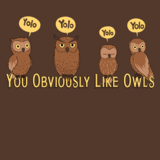271: Shell Scripts for the Soul (Repeat)
Alex Glow filled our heads with project ideas.
Alex is the Resident Hardware Nerd at Hackster.io. Her page is glowascii and you might want to see Archimedes the AI robot owl and the Hardware 101 channel. They have many sponsored contests including BadgeLove. You can find her on Twitter at @glowascii.
Lightning round led us to many possibles:
It you were building an IoT stuffed animal, what would you use? Mycroft and Snips are what is inside Archimedes.
If you were building a camera to monitor a 3d printer, what would you use? For her M3D Micro Printer, Alex would use the Raspberry Pi based OctoPi to monitor it.
If you were going to a classroom of 2nd graders, what boards would you take? The BBC Micro:bit (based on Code Bug) or some LittleBits kits (Star Wars Droid Inventor Kit and Korg Synth Kit are on Amazon (those are Embedded affiliate links, btw).
If you were going to make a car-sized fighting robot, what dev system would you use? The Open Source Novena DIY Laptop initially designed Bunnie Huang
There were more software and hardware kits to explore:
Raspberry Pi Chirp
For your amusement Floppotron plays Bohemian Rhapsody
Alex gave a shout out to her first hackerspace All Hands Active
Ableton is audio workstation and sequencer software. Alex recommends Women’s Audio Mission as a good way to learn audio production and recording if you are in the San Francisco area.
There is an Interplanetary File System and Alex worked on a portable printer console for it.
Elecia is always willing to talk about Ty the typing robot and/or narwhals teaching Bayes Rule. She recommended the book There Are No Electrons: Electronics for Earthlings by Kenn Amdahl.


